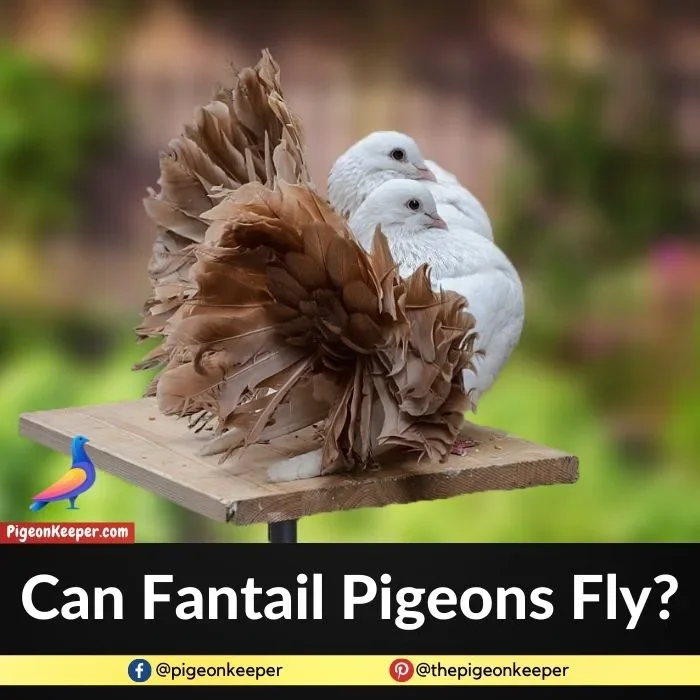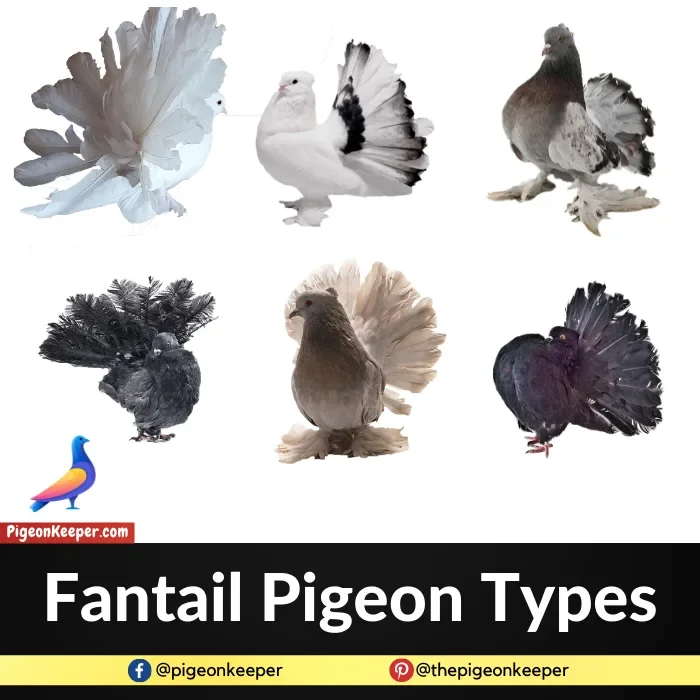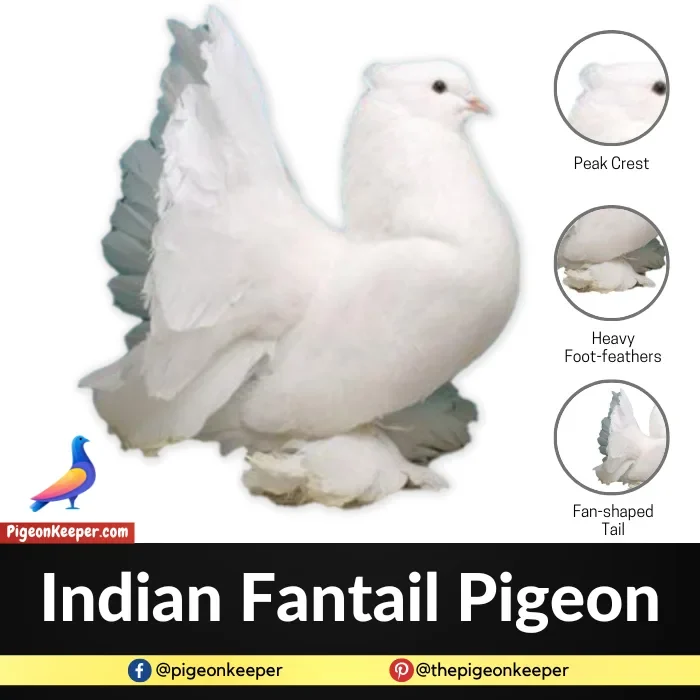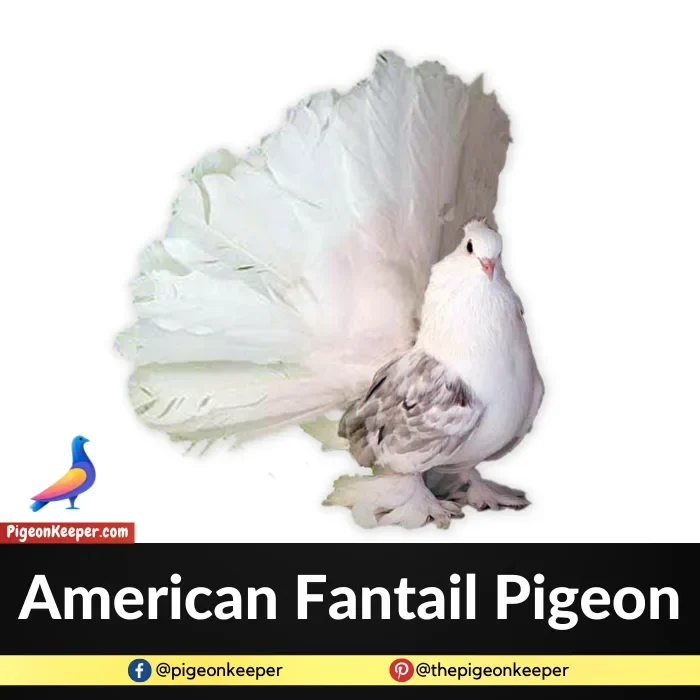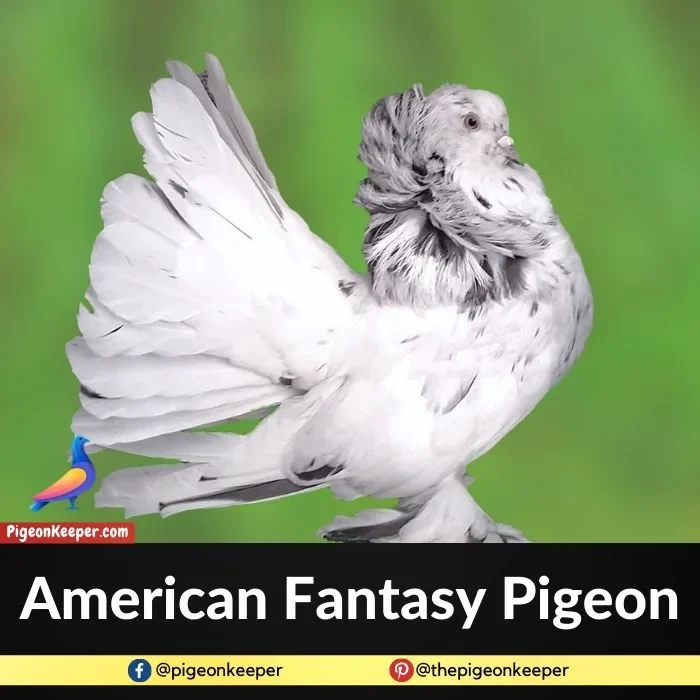Almost all pigeons can fly but some pigeon breeds lack the ability to fly like regular pigeons. For example, breeds like Bokhara Trumpeter have large muffs, French Mondains have a heavy structure and Parlor Roller lack balance. Similarly, fantails also have a special body structure. But what about their flight? can fantail pigeons fly?
Fantail pigeons can fly but their flight is limited, they cannot fly like racing pigeons. Generally, They can fly just as much as crossing 3-4 roofs, covering a distance of up to 150 feet in a single flight. Their typical flight duration is less than 1 minute. Let’s discuss the reasons behind their poor flight ability.
Reasons Behind Fantail Pigeon’s Poor Flight
Since there are different types of fantail pigeons, the situation is different for all types. Some of them cannot fly because their huge tail and muffs obstruct them, some have a heavy body and others have feeble wings that are not fit for flying.
For example, Garden fantails have almost the same weight as regular pigeons and their tail is titled can make short flights but American Fantails cannot fly at all. Their enormous body structure and heavy weight make it nearly impossible to fly.
1. The Tail Structure of Fantails Obstruct Flight
Racing pigeons have up to 12-14 tail feathers but an average fantail pigeon has 25-35 feathers. These tail feathers are heavier and greater than the tail feathers of ordinary pigeons which causes obstruction in flight.
The tail feathers of regular pigeons are designed to help them steer and stabilize flights. (1) Like the airplane tail helps with aerodynamics and stabilization, the pigeon tail also helps during flights. The situation is different with fantails, their tail is not shaped to help them stabilize during flights.
Fantails Cannot Fly Even If Their Tails Are Trimmed
You might be wondering what if their tail feathers are trimmed? Will they be able to fly? No, trimming their tail feathers won’t enable them to fly much. Moreover, they do not lose their grace without their tail and I’ve noticed they look unhappy without it.

2. American Fantails Are Too Heavy to Fly
Generally, pigeons weigh 238-380 gm but American fantails can weigh up to 600 g. They have a huge body structure, tail, and muffs which makes them too heavy to fly. I have seen some extraordinarily huge American fantails that couldn’t fly at more than 1 feet height.
3. Silky Effect in Feathers Makes Them Hairy
All fantail types have strong and broad feathers except Silky fantails. They have a lace effect in their feathers which makes them look like hair. Their feathers are so fragile that they cannot fly at all.
Is it Necessary for Fantails to Fly?
Yes, pigeons are naturally supposed to fly, and confining them to small cages affects their health. The constant muscle functioning during flights keeps them physically fit. Fantails raised in flight cages stay healthier and have a longer lifespan.
Should I Let My Fantail Pigeons Fly in The Open?
No, it is not safe for fantails to fly in the open. They are bad flyers, they cannot make quick flights and protect themselves if a predator attacks. Do not let your fantails fly in the open especially if there are predators like cats and eagles in your area. It is recommended to keep them in a flight cage so that they can fly and also stay out of the reach of predators.
Apart from health and safety, all pigeons like to fly. They stay happier in flight cages as compared to small cages where they can’t fly at all. It also enhances their breeding as the mating ritual involves male pigeons chasing females. The ability to mate wherever they feel comfortable encourages breeding.
Flight cages should be big enough for the pigeon to make short flights, like taking off from the ground and sitting on a perch.
Final Thoughts
Fantails can make short flights and they need it. They should be kept in flight cages to encourage flying and keep them safe from predators.

Bilal is a freelance writer and a content creator. He has been in the pigeon hobby for over 15 years. His deep interest in pigeon keeping enabled him to explore the development of various pigeon breeds and share them with the community.

